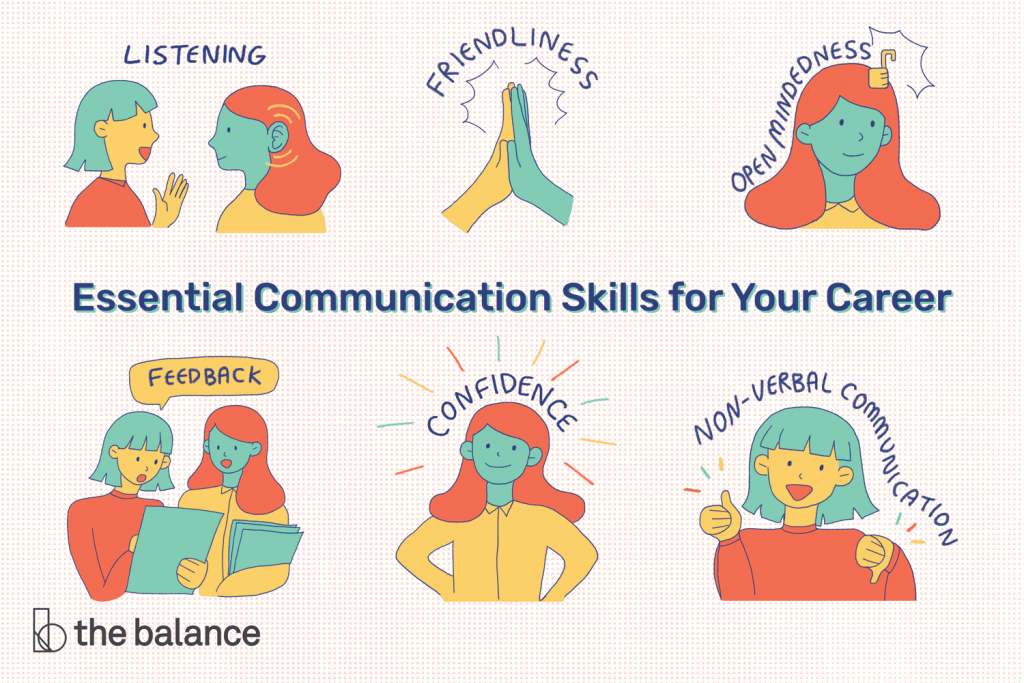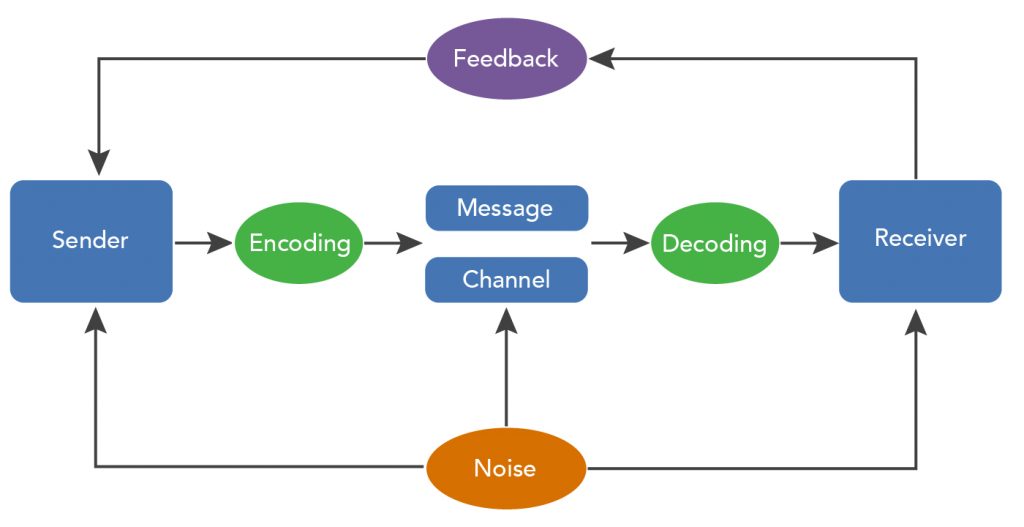
Communication is a process of sharing knowledge, data, and information from one individual to another or a group of people. It’s important because having excellent communication skills and understanding of process of communication is crucial for a healthy and productive personality these days. This article will help you understand communication process importance better and will aid you in sharping your communication skills.
What Is The Process Of Communication?
Communication is a process that involves conveying and collecting messages through a verbal and non-verbal method. The sender sends a message, the receiver receives a message and sends it back with the response to the sender again.
You can commute by several means like oral and speech communication, written and graphical representations. The process of communication is a continuous and dynamic interaction as either you are commutating with others or you’re commutating with yourself and must understand communication process importance!
Now that we are aware of the process of communication, let’s learn more about it’s elements and importance of communication process.
Also Read : Importance Of Reading Essay
Components In The Process Of Communication

- Sender
- It is the person who transmits or sends the message.
- This component is the initiator of the message.
- Message
- The message is the information transmitted between the sender and the receiver.
- It may be of different forms such as it can be a thought, idea, picture, symbol, report, or order and postures and gestures.
- The message is encoded and decoded every time communication occurs.
- Receiver
- The receiver is the target person or group to whom the message was sent.
- He may be a listener, a reader, or a viewer.
- The effectiveness of decoding the message by the receiver depends on his/her knowledge of the subject of the message.
Important Conditions For Effective Communication

- Listening
- Be a good listener.
- Practice active listening.
- Active listening involves hearing and understanding what a person is saying to you.
- Gain clarification by asking questions or rephrase what you’re being told.
- Non-Verbal Communication
- Body language is an important communication tool.
- Consider things like the tone of your voice, your hand gestures, and ensuring eye contact.
- These signals will give you an insight into how that person is feeling.
- Make eye contact with the person you are communicating with.
- Be Clear and Concise
- Convey your message using as few words as possible.
- Convey your message clearly, concisely, and direct.
- Before speaking give some thought as to the message you want to convey.
- Be Confident
- Making eye contact, using a firm but friendly tone (never aggressive), are all ways you can exude confidence.
- Look out for those nonverbal clues.
- Always Have An Open Mind
- Approach every conversation with a flexible, open mind.
- Engage in active listening.
Processes That Undergo While You Communicate

Encoding
- It is defined as putting the targeted message into verbal or non-verbal signals.
- The sender encodes the message into a series of signals.
Decoding
- It refers to interpreting the signals sent into language.
- The receiver after receiving the signal interprets it and then responds accordingly.
Basic Model Of Communication

Barriers to Effective Communication
- The transmission of a signal to the receiving of the same, the message may get disturbed by many factors and act as hindrance in which are known as. These are:
- Poor choice of communication method
- Noise
- Physical distractions
- Language problems
- Ignorance on the part of the receiver

Also Read : Essay on Science And Technology
Types Of Communication
- Verbal –
- This method uses speech in the form of speaking to convey the signal.
- It is usually practiced during video conferences, phone calls, presentations, and meetings.
- Nonverbal –
- Nonverbal communication involves the use of gestures, facial expressions, and body language to send information.
- Written –
- It involves the use of typing, numbers, letters, and writing.
- It may be used to record information for evidence or reference purposes.
- Commonly, it is used in books, blogs, pamphlets, memos, and letters to share and spread information.
- Visual –
- It involves art, photographs, sketches, graphs, charts, and drawings, for the transmission of information.
- It is used during presentations to support written or verbal communication.
Importance of Communication

- The Basis of Co-ordination
A Leader of an organization explains to its employees the organizational goals, modes of their achievement. This aids coordination between various employees. Hence, communications act as a basis for coordination.
- Fluent Working
The fluency of any group task is not possible without proper communication.
- Induces Decision Making
Proper communication (verbal and nonverbal) provides information that is useful for decision making.
- Increases Efficiency
Communication is essential for the quick and effective performance of the entire organization.
- Increases Organizational Peace
Effective communication promotes mutual understanding. This leads to less friction and thus leads to organizational peace.
- Boosts Human Relationships
Good communication improves good human relations in the industry. It motivates, influences and satisfies the employees which boosts their morale and keeps them motivated with help of communication process importance.
- Gives everyone a voice
Communication builds the ability to freely communicate with their peers, colleagues and superiors.
- Innovation
An environment that encourages to openly communicate ideas without fear of criticism is more likely to induce novel ideas.
- Growth
Growth relies on strong communication, whether internal or external.
How to Improve Your Communication Skills?
- Deliver your message clearly –
- Ensure your signal is clear and accessible.
- Speak plainly and politely
- Do not cause any confusion or offense.
- Choose your medium carefully –
- Decide whether information delivered in a printed copy would work better or an email or a general memo will be enough.
- Define goals and expectations –
- Make a format for your communication by assigning achievable goals, outlining exactly what is required.
- Ensure that everyone is aware of the objectives.
- Keep everyone involved –
- Be interactive
- Ensure that communication is kept open at all times.
- Encourage updates and feedbacks.
- Listen and show empathy –
- Listening shows respect.
- It allows you to learn about any novel issues you may face.
Conclusion: Process of Communication
Good communication is an essential tool in achieving productivity and maintaining strong working relationships. Anyone who invest time and energy into delivering clear lines of communication will rapidly build trust among his/her fellows, leading to increases in productivity, output and morale. These humans valuable assets to an organization.
Hence,understanding communication process importance and communication skill is a must have!
Q.1. What is the significance of the communication process?
Q.2. What exactly is effective communication?
Q.3. What is The Most Important Part of Communication?
Q.4. What is the most important form of communication and why?
You may find more interesting articles to read to improve your personality altogether. Browse StudyEquation Now!